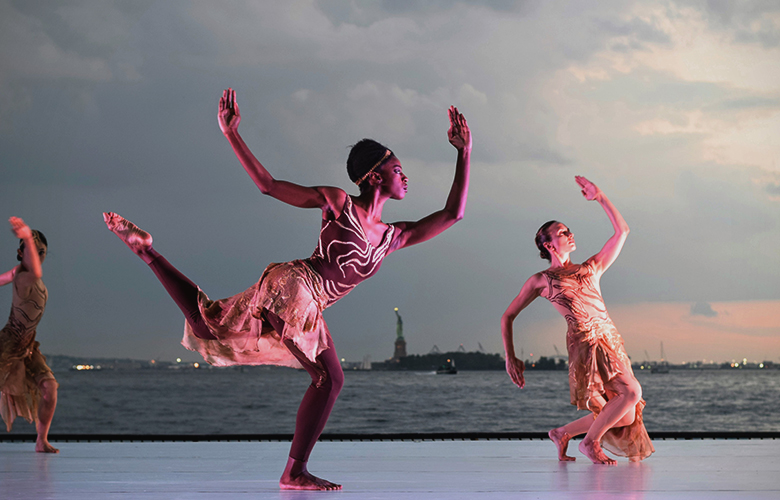
The first time I saw a play in a space that wasn’t a brick and mortar theater was in 2010 in New York City. It was a Shakespeare in the Park production of Twelfth Night. I’ve always been a traditionalist when it comes to theater and the arts; I’ve always expressed an utmost respect for the craft and the process which it takes to create it. Going into this performance, I didn’t have high expectations for what I was about to watch. I had very little faith that a group of artists can somehow manage to perform a Shakespeare play in a park in the middle of one of the busiest cities in the world and manage to keep an audience engaged with the number of elements that surrounded them.
Fast forward to the end of the play. I was a convert. I went from questioning why anyone would mount a play outside a theater space to; why wouldn’t everyone produce plays outside of the traditional theater spaces. Since then, I have not only attended several plays and concerts but also worked with a few productions set in non-traditional spaces ranging from old freight containers to renovated villas with more than seven rooms each with a scene taking place simultaneously. Nowadays with the rise in popularity of what is known as an “immersive play” and “experiential theater”, you would be hard pressed to find an avid theater goer who hasn’t at some point experienced theater or concerts in this form.
Ryan George, an actor based in New York City recalls a production of an adaptation of Romeo & Juliet he performed in which took place in the Miami Youngarts Foundation courtyard in 2015.
“We utilized the space we had, to create a world where traditions of normal staged storytelling could be broken and explored differently.” Although performing in non-traditional spaces can lead to a number of creative discoveries, it does at times present its challenges. “The audience becomes more unpredictable,” adds George. “You have to be aware of maintaining the integrity of the show while also allowing for these unique moments between the audience and yourself to exist.”
Anna Araiza, a director at a New York City based non-profit is a theater lover with an affinity for Shakespeare.
“One of my favorites are the panoramic shows, where audience members follow the players through different areas of the park when there is a scene change,” says Araiza. These types of performances are also a powerful tool used to reach out to the community and expose the art form to a more diverse audience. “I enjoy the diversity and inclusivity at some of the shows.” Theaters, however, are not the only ones that have realized the benefits of creating experiences outdoors. Musicians are also stepping outside of their concert halls and into the community. “I discovered Rana Santacruz through one of Lincoln Center’s free summer programs,” continued Araiza. “As a Mexican-American, this was definitely something that grabbed my attention.”
Along with the world we live in, the arts are constantly evolving. As artists and arts administrators, we work to create experiences and inspire audiences to see and feel things are not really there. French painter, Edgar Degas captured this idea beautifully when he said, “Art is not what you see, but what you make others see.” We already know how exercising our creativity benefits us as artists; now imagine how it would affect our communities if we further challenged our audiences by taking our “traditional art” outside of their concert halls and theaters, and transported them to unexpected locations such as courtyards, gardens, and parks; what a whimsical world we would live in.
So, What Do You Do Exactly? Defining Your Career in the Arts


Eloisa Ferrer is originally from Miami, FL and holds a Bachelor’s Degree in Vocal Performance from the University of Miami and a Master's in Performing Arts Administration through Roosevelt University in Chicago. She has performed with Chelsea Opera and the Bronx Opera in New York City; the Allentown Symphony Orchestra, as well as the Barcelona Festival of Song in Spain. She served as Box Office Manager for Gablestage Theater in Coral Gables, FL for 5 years and has served as House Manager for The Amparo Experience, an experiential theatrical production in Miami through its entire 9 month run. She also served as the Admissions and Recruitment Coordinator for New World School of the Arts for three years and most recently served as well as Production Assistant/ASM for Miami New Drama’s World Premier production of A Wonderful World. Eloisa was raised in a not-so-typical Cuban household which greatly influenced her artistic path and instilled in her the desire to always embrace her curiosity and her need to see and learn things from different perspectives. She looks forward to continuing her work with artists and organizations that focus on telling stories that reflect those that make up the fabric of her community.
Read Full Profile© 2021 TheatreArtLife. All rights reserved.

Thank you so much for reading, but you have now reached your free article limit for this month.
Our contributors are currently writing more articles for you to enjoy.
To keep reading, all you have to do is become a subscriber and then you can read unlimited articles anytime.
Your investment will help us continue to ignite connections across the globe in live entertainment and build this community for industry professionals.